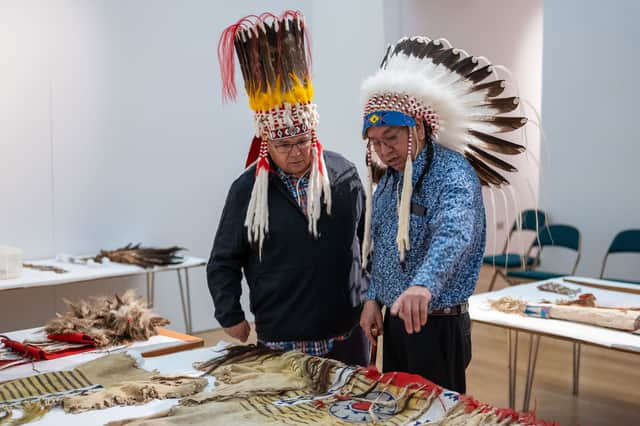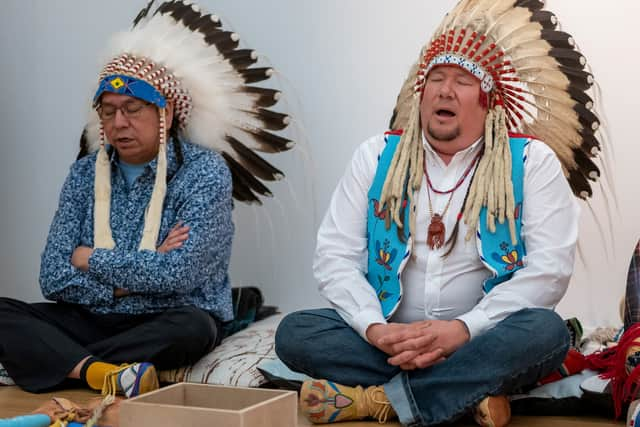Devon museum's Native American headdress on display for over 100 years looks set to finally be returned


A sacred Native American headdress that features buffalo horns and eagle feathers will finally be returned after being on display for more than a century. The Royal Albert Memorial Museum in Exeter, Devon has agreed to return the headdress to its original owners. The item - known as 'bird bundle' has been on display at the museum since 1920. The headdress' origins trace back to the Blackfoot Nation of Alberta, Canada.
Indigo bunting feathers, red-tailed hawk feathers, red trade cloth, porcupine quills and brass bells are other elements of the headdress - identified as a 'sacred ceremonial item' in 2013 by a delegation from the community. Last year, elders from the Sikiska tribe of the Blackfoot Nation returned to Exeter to discuss reclaiming the item.
Advertisement
Hide AdAdvertisement
Hide AdThe headdress was acquired originally by Edgar Dewdney, Lieutenant Governor of the Northwest Territories and a Canadian MP, who sought fortune working as a Canadian rail surveyor and became 'Indian Commissioner' in the country in 1892. It remains a mystery how he specifically acquired the headdress, though the report by Exeter City Council suggests that the item would not have been 'given freely'.


The report speculates that the item was likely seized as part of an assimilation effort by colonial Canadian authorities in Alberta to impose European culture upon indigenous people - which Dewdney would have been responsible for enforcing.
The report adds: “Recent discussions on the decolonisation of Britain’s museums have placed greater emphasis on the moral obligation of museums to return material to community use that may override former concerns on the long-term preservation of sacred artefacts in museum conditions.”
If returned, Siksika Chief Ouray Crowfoot says the item will be used by the Holy Buffalo Women Society 'as originally intended' - rather than as an artefact. Speaking in July last year during a visit to the museum, he said: “Bringing these items back home to Siksika is a historic event. Many items left Siksika and other Nations and were scattered across the globe.
Advertisement
Hide AdAdvertisement
Hide Ad"Now the tides are turning and these items are finding their way back home. Crowfoot’s entire essence is in and around Blackfoot territory and this is where his belongings should be housed. We are building strong relationships with curators at several museums as well as private collectors in an effort to bring items such as the ones coming home back to their rightful place.
"There are many more Blackfoot items still in need of being claimed and repatriated back to their rightful homeland. To me, it is not as important how these items left Siksika, but what is important is how we bring them back home.”
Exeter City councillors will decide whether to return the item next week following the presentation of a report on the matter. The headdress is the latest point of controversy over the city's relationship with Native American communities.
Premiership rugby team the Exeter Chiefs were forced to change their logo, mascot and branding in January 2022 following criticism for their use of a Native American headdress as their logo.
Comment Guidelines
National World encourages reader discussion on our stories. User feedback, insights and back-and-forth exchanges add a rich layer of context to reporting. Please review our Community Guidelines before commenting.
